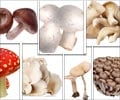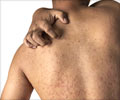FAQs on Death Angel Mushroom: How to Spot and Handle the Deadly Amanita
1. What is the Death Angel mushroom?The Death Angel mushroom is a highly toxic species in the Amanita genus, known for its deadly effects if ingested. Commonly referred to as Amanita ocreata, Amanita virosa, or Amanita bisporigera, it contains potent amatoxins that can cause severe liver and kidney damage.
2. How can you identify the Death Angel mushroom?
Key identification features include a white cap, white gills, a white stem with a bulbous base, a large persistent ring (annulus) near the top of the stem, and a white cup-like sheath (volva) at the base.
3. How long after ingestion do symptoms of Death Angel mushroom poisoning appear?
Initial symptoms typically appear 6-12 hours after ingestion, with a false improvement period before severe symptoms like liver failure emerge 48-72 hours later.
4. What should you do if you suspect Death Angel mushroom poisoning?
Seek emergency medical attention immediately. Do not wait for symptoms to worsen, as early treatment is crucial.
5. Can Death Angel mushroom poisoning be fatal?
Yes, Death Angel mushroom poisoning can be fatal if not treated promptly and effectively. The amatoxins cause severe liver damage and can lead to multi-organ failure.
6. How can you prevent Death Angel mushroom poisoning?
Avoid foraging wild mushrooms unless you are an expert, as many toxic species resemble edible ones. Educate yourself about local mushroom species and their identification.
7. Are there any antidotes for Death Angel mushroom poisoning?
There is no specific antidote for Death Angel mushroom poisoning. Treatment focuses on supportive care and managing symptoms, with N-acetylcysteine used to mitigate liver damage.
8. Can Death Angel mushrooms be mistaken for edible mushrooms?
Yes, Death Angel mushrooms can be mistaken for edible mushrooms due to their similar appearance. Accurate identification is crucial to avoid poisoning.
9. What are the toxic compounds in the Death Angel mushroom?
The primary toxic compounds in Death Angel mushrooms are amatoxins, including alpha-amanitin, which cause severe liver and kidney damage.
10. How can you distinguish Death Angel mushrooms from other Amanita species?
Death Angel mushrooms are distinguished by their white cap, gills, and stem, along with a large white ring (annulus) and cup-like sheath (volva). Expert identification is recommended to differentiate them from other Amanita species.
11. What is the best way to handle Death Angel mushrooms if encountered?
Do not handle or touch Death Angel mushrooms. If found, avoid disturbing them and report the location to local authorities or mycologists for safe removal.
12. Can you recover from Death Angel mushroom poisoning?
Recovery is possible with prompt medical treatment, including decontamination and supportive care. However, severe poisoning can result in long-term health issues or be fatal if treatment is not received in time.








